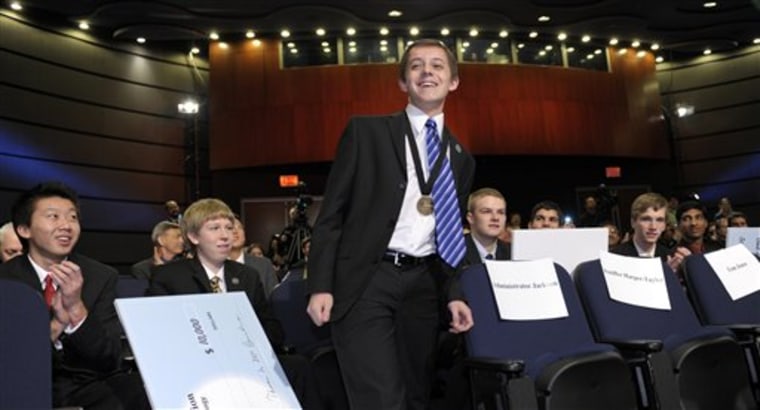A pair of high school students inspired by the science fiction movie "I, Robot" and another who studied star formation took home $100,000 grand prizes Monday in a competition honoring the nation's top math and science students.
The Siemens Competition announced the winners of its college scholarships during a ceremony at George Washington University.
Benjamin Clark of Lancaster, Pa., won the top individual prize for his research on binary stars which, unlike the sun, have companions. The 15-year-old plans to major in physics or astrophysics.
Akash Krishnan and Matthew Fernandez of Portland, Ore., won the team prize for their work on speech recognition technology. They developed a computer algorithm that can detect a speaker's emotion better than current technology and will split the $100,000 team prize.
Krishnan, 16, and Fernandez, 17, watched "I, Robot," while taking a break from trying to come up with a project idea. The movie featured a robot that could detect when its user was stressed, and they decided to try to improve on the existing technology.
Their algorithm has a 60 percent accuracy rate, compared with about 40 percent for a previous system. They say their work could be used to improve computer automated phone systems, helping, for example, to tell if a caller was becoming irate.
"You could automatically redirect them to a actual human person, so that you could handle those kind of angry people better," Krishnan said.
The teens are also working to develop a wristwatch-like device that would display colors or happy and sad faces to help autistic children identify and interpret other people's emotions.
Krishnan plans to study computer science and electrical and mechanical engineering in college, while Fernandez plans to study engineering and computer science.
Six individual students and six teams of students competed in Washington after winning regional competitions in November. They presented their research to a panel of judges Sunday.
"What just blows me away is how advanced they are in their thinking," said Dr. Thomas D. Jones, a former NASA astronaut who headed the judging panel. "Truly these research projects are often at the cutting edge of their field."
___
Online:
Siemens Foundation: http://www.siemens-foundation.org
